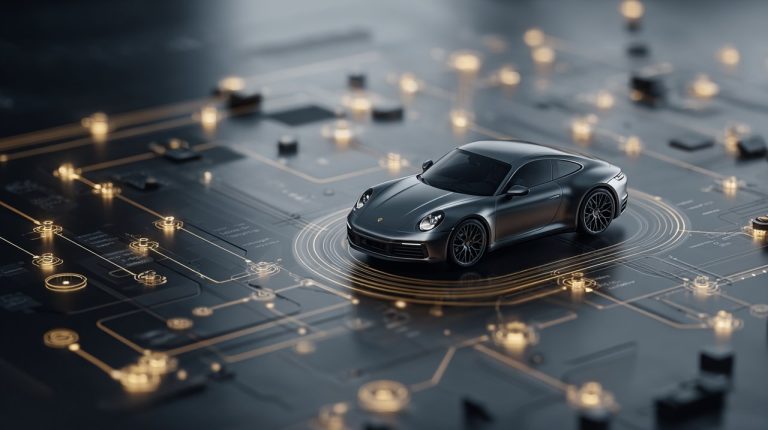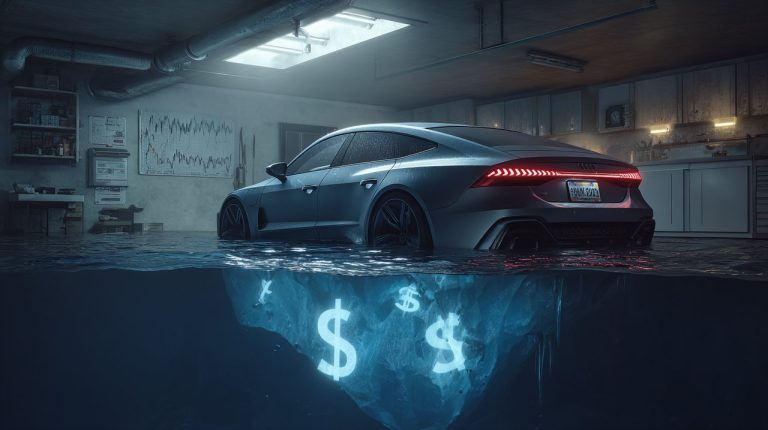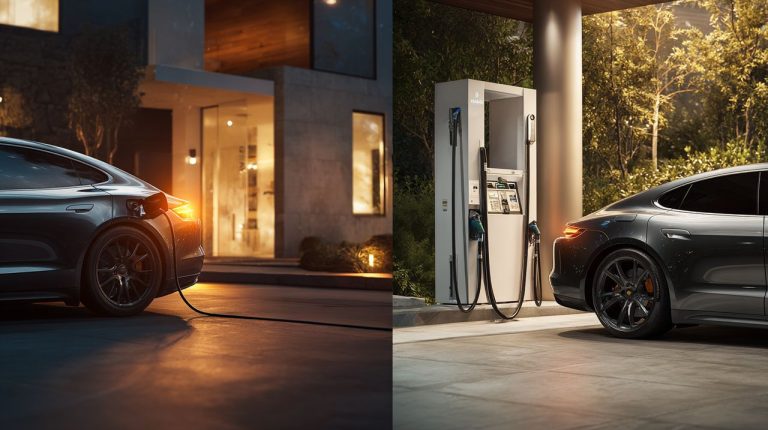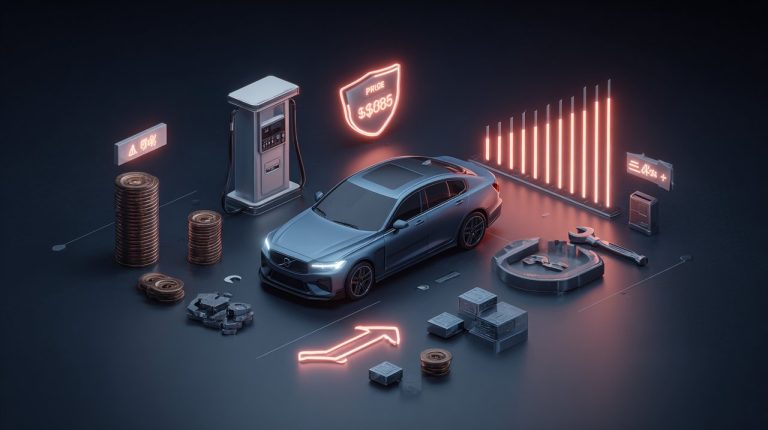Ever noticed how a brand-new car seems to shed a significant chunk of its value almost immediately? We’re talking about an average of 20-30% depreciation in the first year alone. This isn’t just a dry statistic; it’s a quiet, persistent financial drain, often the single biggest contributor to a vehicle’s true cost of ownership.
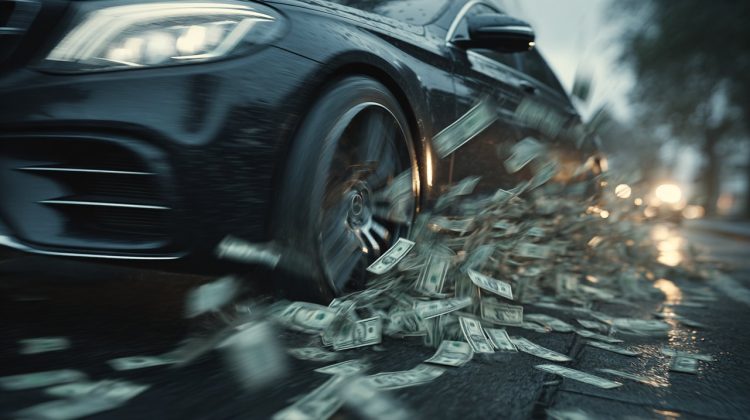
As someone who spends a lot of time observing human behavior in the context of productivity, I’ve seen this pattern over and over. It begs the question: why do we, as otherwise smart and rational individuals, so often overlook this fundamental economic reality? My take is, it’s rarely about a lack of knowledge. Instead, it’s a fascinating interplay of our deeply ingrained psychological biases at play.
Here’s the thing: this isn’t just a financial puzzle; it’s a profound behavioral challenge. Our brains, with all their incredible complexity, are also wired in ways that can subtly derail our best intentions, especially when a shiny new car is beckoning. Recognizing these inherent tendencies isn’t about blaming ourselves; it’s the crucial first step toward making smarter, more cost-effective choices that truly serve our long-term goals.
The Silent Drain: Why We Underestimate Car Depreciation
Let’s be honest, who doesn’t love the idea of “new”? That pristine condition, the intoxicating factory smell, the allure of cutting-edge features – these aren’t just superficial perks. They activate a powerful reward system deep within our brains. It’s this powerful, immediate gratification that often completely overshadows the cold, hard numbers of depreciation.
The Illusion of Newness
There’s an almost magnetic pull towards a brand-new vehicle, isn’t there? It feels like a fresh start, a clean slate, and comes with that comforting promise of reliability. This isn’t just marketing; it’s a genuine psychological halo effect that makes us surprisingly insensitive to the immediate financial penalty we’re about to incur.
We tend to get so caught up in the sticker price and those manageable monthly payments. What often gets pushed to the background is that rapid erosion of value happening right under our noses. This focus on immediate gratification is a classic trap; it can completely blind us to the long-term implications of our choices.
Ignoring the Inevitable: Our Blind Spots
Our brains are incredibly clever at filtering out information that makes us uncomfortable or causes what psychologists call “cognitive dissonance.” The inevitable loss of value in a new car is a perfect example of such an uncomfortable truth.
We might intellectually know cars depreciate, but we often fail to truly internalize its true impact on our finances. This phenomenon is a classic form of optimism bias. We tend to believe that negative events are simply less likely to happen to us.
So, we rationalize: “My car will hold its value better,” or “I’ll keep it long enough for depreciation to matter less.” Even when all the data says otherwise, our optimistic brain finds a way to dismiss the inevitable.
Decoding the Depreciation Dilemma: Behavioral Biases at Play
Beyond that initial allure of newness, there are even deeper behavioral biases actively working against our financial best interests when it comes to car depreciation. It’s crucial to remember: these aren’t character flaws or signs of poor judgment. They’re simply universal human tendencies that influence how we make decisions.
Loss Aversion: The Pain of Selling
Ever heard of loss aversion? It’s a concept brilliantly articulated by Nobel laureate Daniel Kahneman, and it explains a critical aspect of our car-buying behavior. Simply put, the pain of losing money feels about twice as powerful as the pleasure of gaining an equivalent amount.
Think about it: the very thought of seeing our car’s value plummet on the resale market can be incredibly unpleasant. This discomfort is so strong that we might unconsciously avoid thinking about future resale altogether, just to sidestep that painful feeling.
Present Bias: The Allure of Immediate Gratification
We humans are notoriously wired for “now.” We’re just not very good at valuing future rewards as highly as immediate ones. This psychological phenomenon, known as present bias, powerfully drives us to prioritize the sheer joy of driving a new car today.
That immediate thrill often trumps the long-term financial benefits of a more depreciation-friendly purchase. Paying a premium for a new car, even when we know it’s going to rapidly lose value, is a classic example of choosing instant gratification over delayed financial prudence. That “future self” who has to deal with the resale value just feels too abstract and distant, doesn’t it?

Sunk Cost Fallacy: Trapped by Our Choices
Once we’ve poured a significant amount of money into something – be it the car’s purchase price or those cool modifications – we become incredibly susceptible to the sunk cost fallacy. It’s that feeling where we’re unwilling to ‘waste’ that past investment by selling the car, even if holding onto it means continued financial bleeding through depreciation.
This bias can subtly trap us in financially suboptimal decisions. We cling to past choices, not because they’re good for our future, but because we’ve already invested so much. It’s the classic “I’ve already put so much into it, I can’t give up now!” trap, even when giving up might be the smartest move.
Bridging the Gap: Small Shifts for Smarter Car Choices
Okay, so recognizing these biases is a huge first step. But what’s next? This is where we shift from understanding to action. The goal isn’t to rely on sheer willpower – because, let’s be honest, willpower is a finite resource. Instead, it’s about implementing small, actionable behavioral interventions that help us ‘outsmart’ our own brains by designing better decision environments.
The ‘Pre-Mortem’ Exercise: Visualizing Future Loss
Here’s a neat trick from the world of project management, adapted for car buying: before you even get serious about a purchase, perform a ‘pre-mortem’ exercise. Imagine it’s three or five years from now, and you’re trying to sell the exact car you’re currently considering.
Ask yourself: What problems did you encounter? What was its actual resale value? This simple mental exercise forces you to confront future depreciation before the emotional attachment and present bias have a chance to fully kick in. It’s a powerful way to make that abstract future loss feel very, very concrete.
Anchoring Your Expectations: Researching Resale
Don’t just fixate on the sticker price. Instead, consciously anchor your expectations to the car’s projected resale value. Tools like Kelley Blue Book or Edmunds are your allies here; use them to research the typical depreciation rates for the specific models you’re eyeing.
Knowing that a certain model reliably loses a higher percentage of its value can act as a powerful counter-anchor against that initial ‘new car’ allure. This simple shift in focus moves you from merely considering the purchase price to understanding the car’s true, long-term cost (and to help you calculate that precisely, we’ve developed a dedicated toolTrue Cost of Car Ownership Calculator).

Rethinking ‘New’: The Value of Used Cars
Perhaps the most straightforward behavioral intervention here is to simply challenge your own definition of ‘new.’ Consider this: a certified pre-owned (CPO) vehicle has already absorbed the steepest part of that depreciation curve. This means you can often get a nearly-new experience for significantly less money.
It’s a subtle but powerful mind hack: by reframing ‘used’ as ‘smart’ or ‘value-driven,’ you can overcome that psychological aversion many of us have to non-new items. This isn’t about compromising; it’s about consciously shifting your internal narrative from status symbols to genuine financial savvy.
Beyond the Numbers: Reclaiming Control Over Your Vehicle’s True Cost
Ultimately, understanding car depreciation isn’t just about saving a few bucks. It’s about something far more significant: reclaiming control over a sizable chunk of your personal finances. It’s about shifting from being a passive recipient of market forces to becoming an empowered, intentional decision-maker.
From Financial Burden to Empowered Decision
When we consciously acknowledge these behavioral biases, we transform the abstract concept of depreciation into a tangible factor that we can actively influence. This shift is incredibly empowering. It allows us to make choices that truly align with our long-term financial well-being, rather than being swayed by fleeting desires for something new.
It’s a subtle but profound change in mindset: you move from feeling like a victim of hidden costs to becoming an active architect of your financial future. That’s a powerful position to be in.
The Long-Term View: A Habit Worth Building
Applying these insights to something like a car purchase is more than just a one-off decision; it’s a fantastic opportunity to cultivate a truly valuable habit. The ability to pause, reflect, and apply behavioral insights to *any* financial decision can extend far beyond your garage and into every area of your life.
This practice of understanding your own mind – how it’s wired, what biases it holds – rather than just blindly following market trends, is truly a muscle worth developing. It’s the key to making not just smarter car choices, but ultimately, building a more financially resilient and intentional life. Consider this journey into understanding your biases as your very first step in building that crucial habit.
💡 Frequently Asked Questions
The article highlights car depreciation as a significant financial drain, noting that new cars can lose an average of 20-30% of their value in the first year alone, contributing substantially to the true cost of ownership.
People often overlook car depreciation due to deeply ingrained psychological biases, including the allure of newness and immediate gratification, optimism bias, loss aversion, present bias, and the sunk cost fallacy, which subtly derail rational financial decisions.
Key psychological biases include the 'illusion of newness' (immediate gratification), optimism bias (believing negative events are less likely to happen to them), loss aversion (the pain of losing money), present bias (prioritizing immediate rewards over future ones), and the sunk cost fallacy (unwillingness to 'waste' past investments).
Practical strategies include performing a 'pre-mortem' exercise to visualize future depreciation, anchoring expectations to projected resale values by researching models, and rethinking 'new' by considering certified pre-owned (CPO) vehicles that have already absorbed the steepest depreciation.





